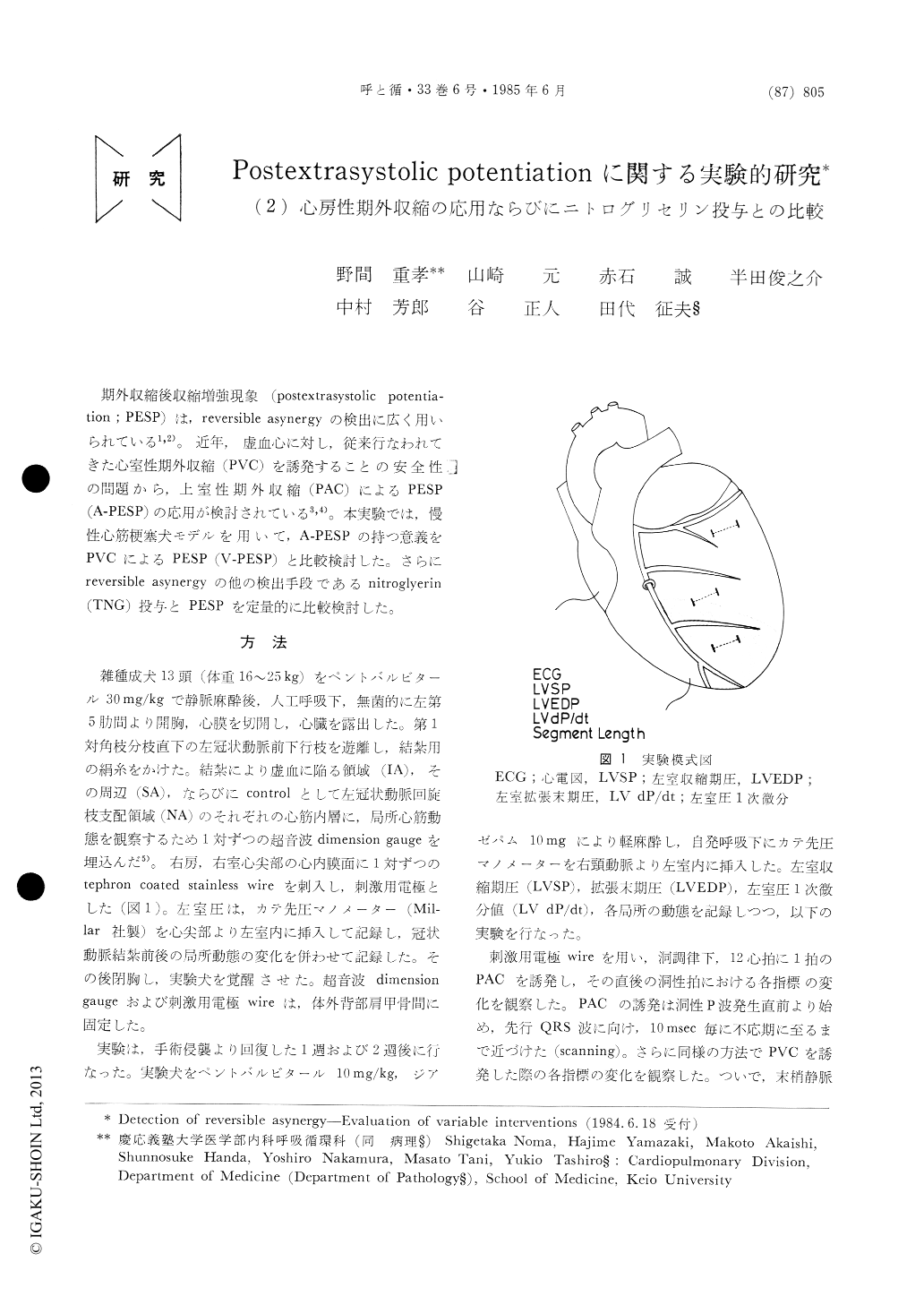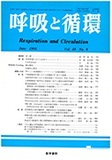Japanese
English
- 有料閲覧
- Abstract 文献概要
- 1ページ目 Look Inside
期外収縮後収縮増強現象(postextrasystolic potentia—tion;PESP)は,reversible asynergyの検出に広く用いられている1,2)。近年,虚血心に対し,従来行なわれてきた心室性期外収縮(PVC)を誘発することの安全性の問題から,上室性期外収縮(PAC)によるPESP(A-PESP)の応用が検討されている3,4)。本実験では,慢性心筋梗塞犬モデルを用いて,A-PESPの持つ意義をPVCによるPESP (V-PESP)と比較検討した。さらにreversibie asynergyの他の検出手段であるnitroglyerin(TNG)投与とPESPを定量的に比較検討した。
Postextrasystolic potentiation (PESP) is widely used to detect reversible asynergy of ischemicmyocardium. In this study, the qualitative and quantitative values of PESP by atrial premature beat (A-PESP) and of nitroglycerin (TNG) were evaluated in comparison with PESP by ventricular premature beat (V-PESP). In 13 close-chested dogs, preinstrumented with ultrasonic dimension gauges, the change of regional function in response to A-PESP, V-PESP and administration of TNG was studied in a total of 38 segments (infarcted 11, surrounded 18, normal 9 segments) at two weeks after coronary occlusion. In A-PESP, when atrial premature beat was introduced in appropriate range from preceding QRS wave, improvement of regional function was quantitatively as large as in V-PESP. Regional function was more improved in V-PESP than in TNG quantitatively (p<0.01), however qualitatively TNG was equal to V-PESP. Qualitatively there was no evidence that TNG+PESP was superior to either V-PESP or TNG. Morphologically, the segment in which PESP was observed showed ischemic changes in 35% of trans-mural myocardium maximally.

Copyright © 1985, Igaku-Shoin Ltd. All rights reserved.


